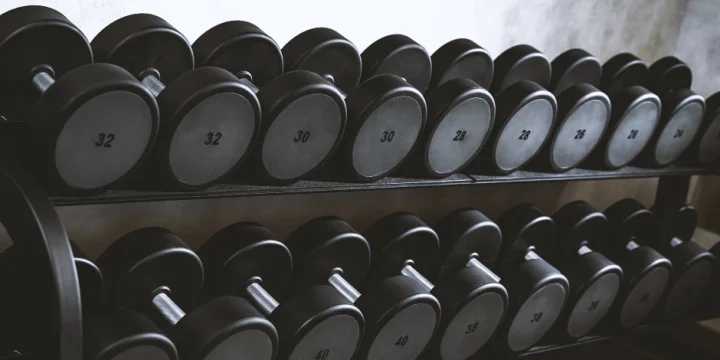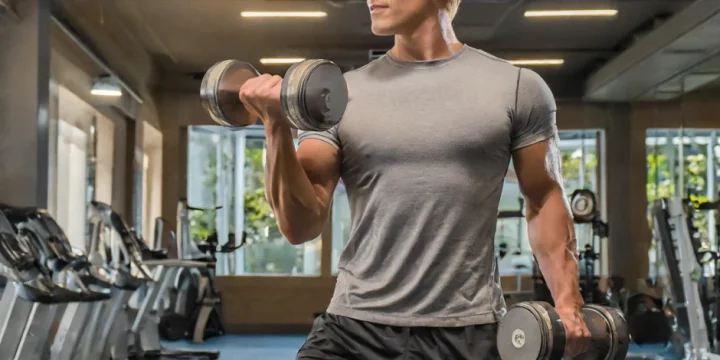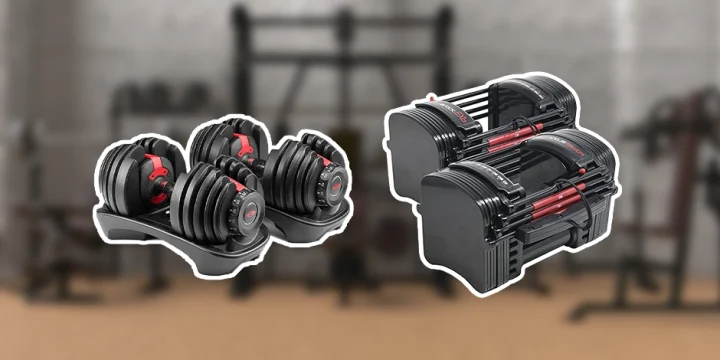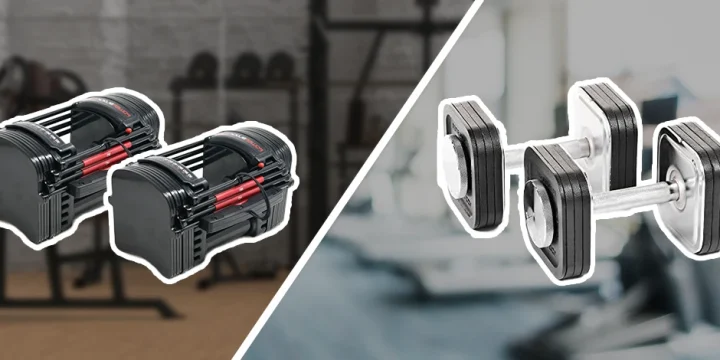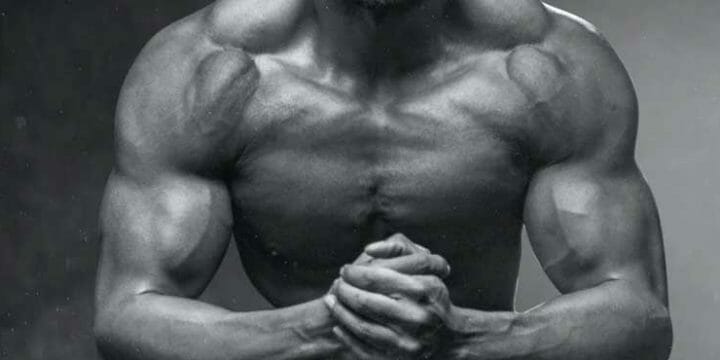Throughout the last ten years, I have assisted numerous clients in transforming their physiques and accomplishing their fitness objectives.
One approach I’ve employed to achieve this is implementing the often underutilized yet highly effective movement for targeting the chest, back, and core muscles: the dumbbell pullover.
It is one of my favorite exercises because it targets multiple muscle groups and can help improve overall strength, muscle definition, and posture.
Along with the correct form, muscles worked, and benefits, I’ll also cover variations and modifications, ensuring everyone can take advantage of this versatile exercise.
Let’s begin.
Quick Summary
- To do a dumbbell pullover, lie flat on a bench, hold a dumbbell with both hands above your chest, then lower it back over your head and return to the starting position, keeping your arms slightly bent throughout the movement.
- A dumbbell pullover mostly works the back and chest muscles.
- According to the Public Library of Science, the dumbbell pullover is a compound resistance exercise that strengthens the chest, back, core, and upper arm muscles
- In my years of coaching, the dumbbell pullover has proven to be a versatile and potent exercise for overall upper-body strength and aesthetic improvement.
How to Do the Dumbbell Pullover

Dumbbell pullovers effectively target the pectoralis major muscle of the chest and the latissimus dorsi muscle of the mid-to-lower back. They are a key component of any recommended upper-body dumbbell workout.
As an experienced fitness trainer, I always advise my clients who are new to the exercise to start with a light to moderate dumbbell weight and gradually increase resistance as they master proper form.
Maximize the benefits of this exercise by squeezing the shoulder blades, abs, and legs together, as you would while bench pressing. If you have shoulder mobility issues, consider a different exercise.
Here’s how to do dumbbell pullovers:
- Lie on a flat bench, fully supporting your head, neck, and back, with feet firmly planted on the floor, just wider than the bench.
- Extend your arms toward the ceiling with your palms facing each other and a slight elbow bend.
- Inhale and extend weights back and overhead, keeping a strong back and core.
- Take 3 to 4 seconds to reach a fully extended position with weights behind, but not below, the head.
- Exhale slowly and return your arms to their starting position.
“To yield the best results, start slow and focus on your form first. As you progress, slowly add more weight or resistance or increase your reps and sets.”
- Katey Davidson, MScFN, RD, CPT
Dumbbell Pullover Variations

Let’s quickly explore some of the best variations:
- Single-arm Dumbbell Pullover: I've found that exercisers with coordination difficulties can use one dumbbell instead of two. This variation has been particularly effective for some of my clients in reducing muscle and strength imbalances from side to side.
- Stability Ball: You can substitute a stability ball for the weight bench. The ball will support the neck and head. Engage the upper-body muscles to move while using the lower-body muscles to stabilize. Keep hips stable and elevated by engaging abdominal, hamstring, and gluteal muscles.
- Elbow Position: You can slightly rotate your elbows inward to focus on your back muscles. The starting position should have elbows pointing towards the feet, not out to the side.
- Incline/Decline: Utilize an incline or decline bench to vary the range of motion for a pullover exercise and target lats differently than a standard pullover. An incline bench targets lats in the stretched range of motion, while a decline bench works them in the contracted range.
You can combine the dumbbell pullover with leg extensions to work additional muscle groups.
Here’s how to do it:
- Begin in the basic dumbbell pullover position, with the bench supporting the back, neck, and head.
- Keep knees bent and lift feet off the floor so knees are over hips (dead bug position).
- Perform one repetition of the dumbbell pullover with arms extended over the chest.
- Hold the upper body still while extending your legs before returning your knees over the chest.
- Alternate one pullover & double leg extension until completion.
Muscles Worked
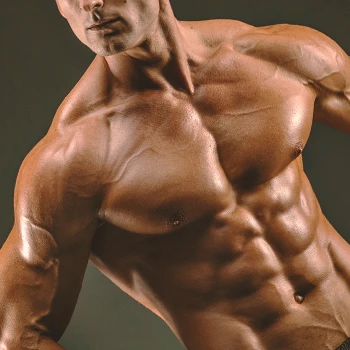
Here is a breakdown of the primary muscles targeted by the dumbbell pullover.
They are:
- Pectorals (chest): This exercise effectively engages the chest muscles, specifically the pectoralis major, which helps push and lift movements as shown by studies in the National Institutes of Health [1].
- Latissimus dorsi (back): The dumbbell pullover also targets the lats. As per research in the National Library of Medicine, working this muscle strengthens the back and improves posture [2].
- Serratus anterior (ribcage): This often overlooked muscle group stabilizes the shoulder blade and assists in various upper body movements, as per reports by the National Institutes of Health [3].
- Triceps. Based on my own experience as a fitness trainer, the dumbbell pullover also works the back of the upper arms, enhancing its effectiveness in upper body conditioning.
Benefits of This Exercise

According to the Public Library of Science, and from what I've observed with my clients, the dumbbell pullover is a compound resistance exercise that not only strengthens the chest, back, core, and upper arm muscles but also significantly improves overall body strength and posture [4].
Compared to other chest and back exercises, the dumbbell pullover uniquely engages these muscles in a way that promotes better postural stability and flexibility.
Other benefits include:
- It helps improve postural stability and flexibility of the chest and upper body. Incorporating it into rehabilitation programs has shown promising results in restoring upper body strength and mobility, especially post-injury.
- It increases muscle mass, specifically in the chest.
- It also engages other nearby muscle groups better than related exercises, such as the bench press.
- Based on my own experience and that of my clients, this exercise also stimulates the upper arms (triceps) more than the bench press and anterior deltoid (shoulder) activation.
- Pullover exercises also target the trapezius and serratus anterior muscles.
Common Mistakes

Here are some common dumbbell pullover mistakes to avoid, which I've often corrected during my training sessions with clients:
- Improper Positioning: Sit properly on the bench, ensuring head and neck support when lying on the bench. Make sure your hips are also supported to prevent lower back pain.
- Not Keeping Core Engaged: To protect the back and prevent injury, and to avoid arching through the spine, which is common when the arms extend overhead, make sure to engage core muscles. If core engagement still proves difficult, you may be lifting too much weight.
- Asymmetric Extension: Unequal extension can occur if one side of your body exhibits greater flexibility or strength compared to the other. Aim to move both arms simultaneously.
- Wrist Flexion: Maintain palms facing each other throughout the exercise with strong wrists and relaxed hands. Decrease weight if wrists start to flop so correct alignment can be maintained through the lower arm.
Training Tips

To reap the most benefits of the dumbbell pullover, follow these tips, which I've consistently shared with my clients:
- Ensure full range of motion in the shoulder joint before starting the exercise. This has been a key factor in helping my clients achieve the best results from their workouts.
- Ensure comfortability with dumbbells, and use no weights while learning the movement.
- Consult a professional if you feel pain in or around the shoulder area.
- Begin with three to four sets of 7–10 reps, adding repetitions and weight as strength and flexibility increase.
- Do not “train to failure,” because when you perform pullovers, you maneuver a heavy dumbbell over your head and face.
- Use controlled movement throughout the whole exercise.
- Rest and nutrition, like adequate protein intake, are vital components of strength training.
As an experienced personal trainer, I also emphasize controlled movements and the gradual progression of weight for maximum muscle engagement and minimal risk of injury.
FAQs
What Muscles Do Dumbbell Pullovers Work?
The muscles worked by dumbbell pullovers include the pectoralis major (chest) and latissimus dorsi (back). Additionally, dumbbell pullovers activate the triceps, teres major, anterior deltoid, and serratus anterior muscles.
What Is a Good Weight for Pullovers?
A good weight for pullovers depends on your strength and fitness level. Beginners should begin with a light to moderate dumbbell of 20–30 pounds or less, if necessary. Advanced users can use a heavier weight as their strength allows.
References:
- https://www.ncbi.nlm.nih.gov/books/NBK525991/
- https://www.ncbi.nlm.nih.gov/books/NBK448120/
- https://www.ncbi.nlm.nih.gov/books/NBK531457/
- https://journals.plos.org/plosone/article?id=10.1371/journal.pone.0171632
About The Author
You May Also Like
